
The Park of Black Dragon Pool in Lijiang
The Park of Black Dragon Pool is the hallmark of Lijiang Ancient City. Located at the foot of the Elephant Mountain in the north of the city, it is also known as Jade Spring Park for spring with crystal-clear water. The spring pool had been granted favor twice by Qing Dynasty emperors for people’s efforts in protecting the water. It has been renowned far and wide since then. From the park, one gets the best view of the Jade Dragon mountain. The reflection of the Jade Dragon Mountain in the spring pool is so beautiful that it is known as one of the 12 best views in Lijiang.
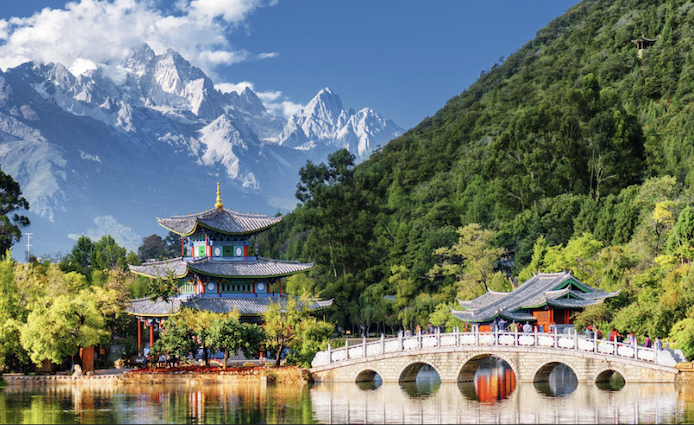
The front gate of the park is originally a gate of a Qing Dynasty Confucian temple; it was moved in 1996 together with the four stone lines in front of the gate tower. Right inside the park is Suocui Bridge(Beauty-locking Bridge), which has a roofed corridor with benches on both sides. From there, one could have a view of the Jade Dragon Snow Mountain and its reflection.
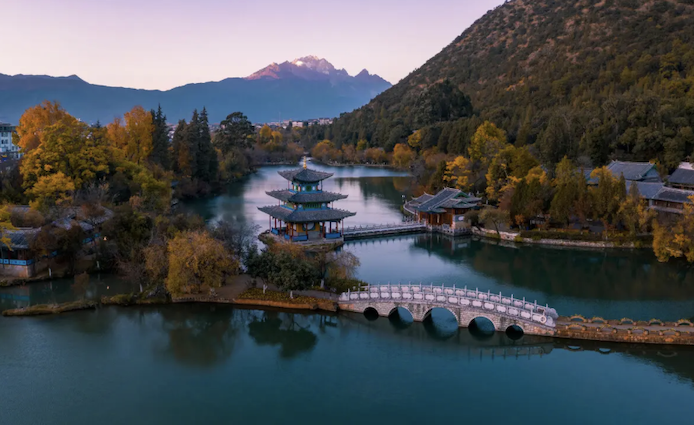
Walking farther, visitors come to Xietuolin Temple, a Ming Dynasty Monastery. As the name suggests, it was a Buddhist temple. Its gate, being the main gate of Fuguo temple, a solemn temple in Lijiang, was moved here in 1974. The world-famous Research Institute of Dongba Culture is nearby.
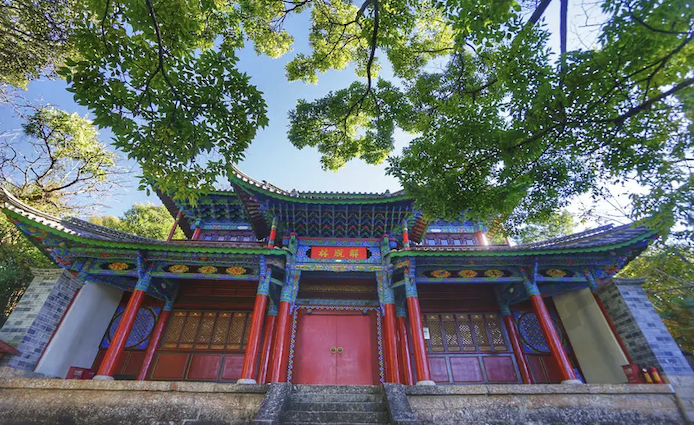
On the way to the Deyuelou(the moon embracing Pavilion), one comes to Spring Headstream, where the water of the pool originates, and then to the five-arch Bridge, which leads to Dyuelou. From the Five-arch Bridge, one could feed red carps and watch them jumping to catch food from visitors.
Deyuelou Pavilion is located in the center of the Black Dragon Pool. It was built in the Qing Dynasty in the style of Suzhou pavilions. Three-storied, conical roofed, and with eaves upturned, this pavilion is the name of the pavilion written by Guo Moro, a famous Chinese poet. He dedicated two couplets to the pavilion. One of the couplets is a clever rearrangement of Chairman Mao’s Poems while the other is Mr. Guo’s composition, both describing the beautiful landscape of the park.
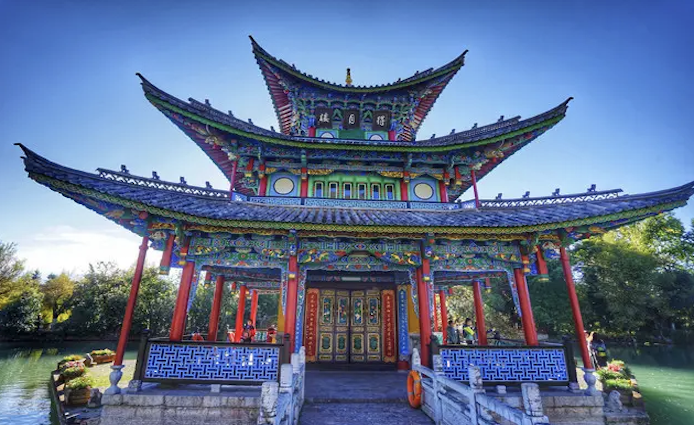
At the north end of the Black Dragon pool, on open ground, lies the Five Phoenix Pavilion, an ancient architecture worth visiting. The Five Phoenix Pavilion was originally called “Fayun Pavilion” and is located in Fuguo Temple. A Tripitaka granted by emperor Xizong of the Ming Dynasty used to be stored in this pavilion. The pavilion, a typical example of the architecture of the Ming And Qing Dynasties, was first built in the Wanli Period of the Ming Dynasty and moved into the Black Dragon Pool in Lijiang City in 1979. it is 20 meters in height and the roof is pointed with three-storied eaves under it. In each direction, eaves upturn at each corner and each story, thus forming 24 flying eaves. From a far point, the pavilion looks like a phoenix spreading her winds and ready to fly. So it got its name. It is on the list of important cultural relics under provincial protection.
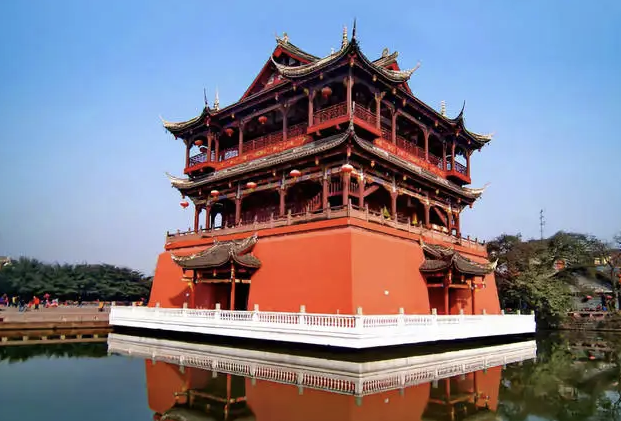
Outside the Five Phoenix Pavilion, to the north, is the Dongba Dance Square. Further north is the Museum of Dongba Culture, which was built in 1993. Here Dongba Culture of the Naxi people was exhibited in many forms.
Photo Resource: Internet
If there's any copyright issue involved, please contact us to delete.



